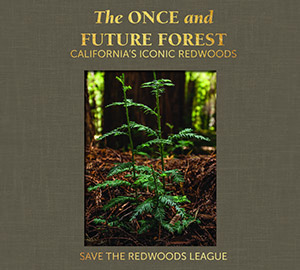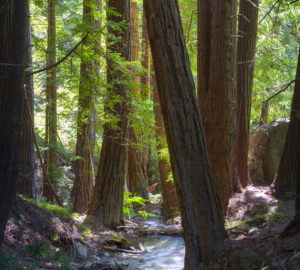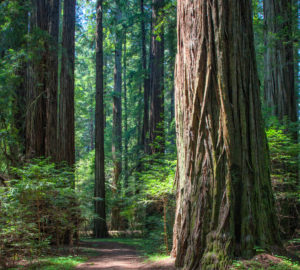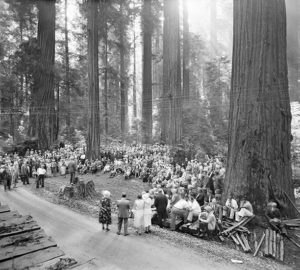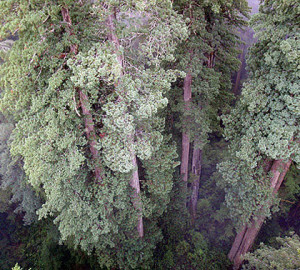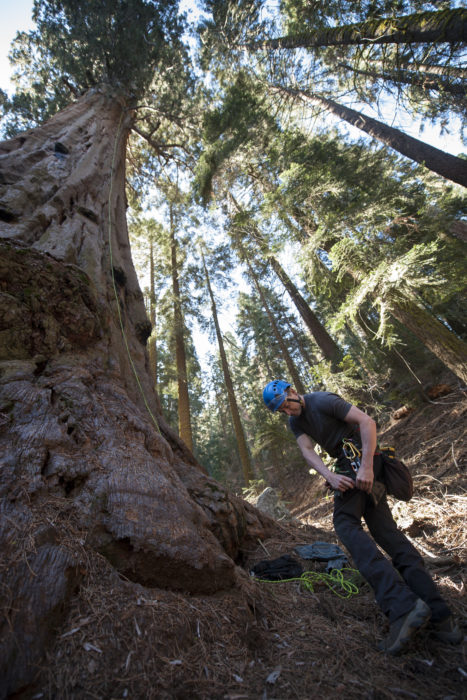
Shrouded in fog and bearing dense, labyrinthine canopies hundreds of feet in the air, redwoods remain mostly a mystery because of their formidable size and scope. But nothing could stop several courageous and curious scientists from getting as up close and personal as humanly possible to the world’s tallest trees.
Meg Lowman, a senior scientist in plant conservation at the California Academy of Sciences, has seen her fair share of treetops from Malaysia to Oregon to the Amazon. Featured in a new book, The Once and Future Forest: California’s Iconic Redwoods, published to commemorate the centennial year of Save the Redwoods League and available for purchase, her essay, The Science of Giants, spotlights past and present research by some of the redwoods’ most brilliant champions.
“More people have climbed Mount Everest than have ascended into a redwood tree canopy.”
Understanding the complexities of a coast redwood forest calls for the passion and brain power of many, many scientists, as well as the teams and citizen scientists that support them. Among the brightest recognized in Lowman’s essay, Steve Sillett from Humboldt State University and forest ecologist Robert Van Pelt from the University of Washington have been essentially heroic in scaling the giant trees and uncovering much of what’s now known about the ecosystems in the canopies. Biologist Todd Dawson from UC Berkeley has explored the key relationship between coast redwoods and fog for decades. In contrast, chief scientist Emily Burns with Save the Redwoods League has spent hundreds of hours on the ground studying ferns, one of the redwood forest’s most vital understory plants.
“Humans developed SCUBA gear in the 1950s and visited the moon in the 1960s, but field biologists (including myself) did not explore the tops of any forest trees with a deliberate and repeatable methodology until the early 1980s.”
Burns is also involved in cutting-edge research in molecular genetics with the Redwood Genome Project. Along with David Neale from UC Davis and Steven Salzburg from Johns Hopkins University, she has been sequencing the entire coast redwood genome. Ultimately, this will pinpoint redwood areas of highest natural diversity and in need of greater protection.
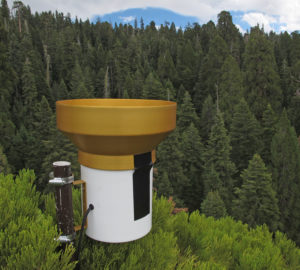
Lowman highlights the pièce de résistance of redwoods research: the Redwoods and Climate Change Initiative (RCCI). Funded by Save the Redwoods League, it comprises the most comprehensive data set and analysis ever amassed for a single tree species.
“In light of recent developments in the fields of climate change and species extinction, researchers have looked to redwoods, and specifically to their canopies, as the proverbial “canary in the coal mine,” with their health considered a harbinger of environmental change on a global scale.”
Substantial, yet digestible and fascinating for the layperson, this essay underscores the importance of a 360-degree scientific approach to not only save the redwoods, but also save the planet. Thankfully, Lowman’s view of the future of Sequoia sempervirens is looking up.
Read more of Lowman’s essay, The Science of Giants, in the new book, The Once and Future Forest, which commemorates the 100th anniversary of Save the Redwoods League. Visit SaveTheRedwoods.org/Heyday to order your copy of this limited edition book today.

